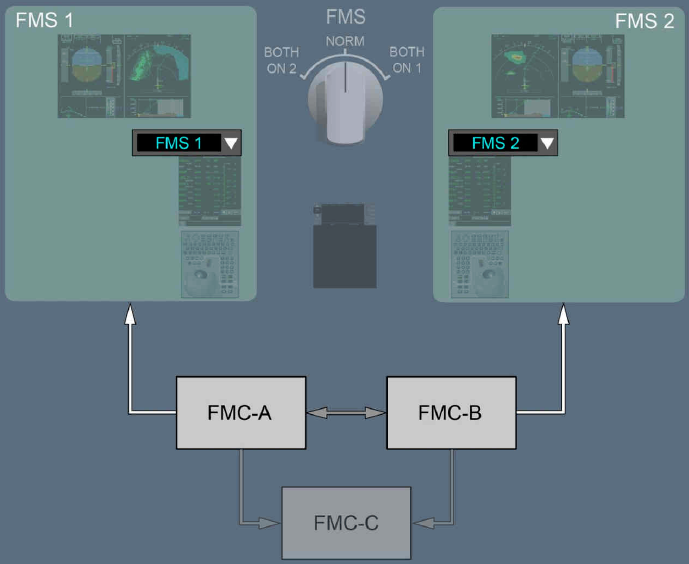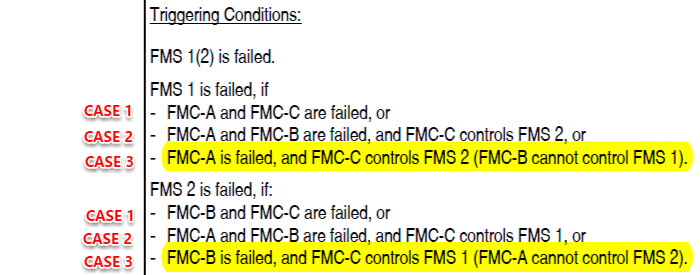正常的接替逻辑是 FMC-A 或者 FMC-B 故障了,FMC-C 去接管,此时 FMS1 和 2都还能正常工作。但如果再坏一个 FMC,只剩下一个 FMC 就只能供一个 FMS 了。就会出现 AUTO FLT FMS 1(2) FAULT 警告。但是在这个警告的触发条件里有一个是 FMC-A is failed, and FMC-C controls FMS 2 (FMC-B cannot control FMS 1). 或者 FMC-B is failed, and FMC-C controls FMS 1 (FMC-A cannot control FMS 2). 这个就很难理解了。
空客的回复说这是个不正常的现象,没说具体为什么会出现,但我想也没有在深入的必要了。具体参考 TechRequest 原文:
Q: AUTO FLT FMS 1(2) FAULT
How can these two conditions happpen:
A:
Refer to CSC A350 FCOM Aircraft Systems/22-AFS-Flight Management System/Abnormal Operations/FMC Reset and Resynchronization-Abnormal Configuration of the FMCs. The normal configuration is the following configuration:
- FMC-A is assigned to FMS 1
- FMC-B is assigned to FMS 2
- FMC-C is the backup FMC
So the highlighted bullet points could happen in the case of an abnormal configuration. For example, FMC-C is assigned to FMS 1 or FMS 2. So if the FMCs are in an abnormal configuration and one FMC-A or FMC-B is failed then one of the two highlighted bullet points can happen.
Q_2:
In your example, "FMC-C is assigned to FMS 1 or FMS 2" can only happen if FMC-A or FMC-B is failed. And if FMC-B or FMC-A is further failed, the case is just the case 2, not case 3.
In CASE 3, "FMC-B(A) cannot control FMS 1(2)" means FMC-B(A) is still available, but just cannot control opposite FMS. So how can it happen when FMS-B(A) is available but FMS 2(1) is controled by FMC-C?
A_2:
Airbus would like to clarify that FMC-C can also be assigned to FMS 1 or FMS 2 in abnormal configurations. This does not mean that FMC-A or FMC-B has to fail. In abnormal configuration, FMC-C can be incorrectly assigned to control FMS 1(2). In this configuration, the failure of FMC-A or FMC-B (depending on the case) can lead to situation labeled as “CASE 3”.


